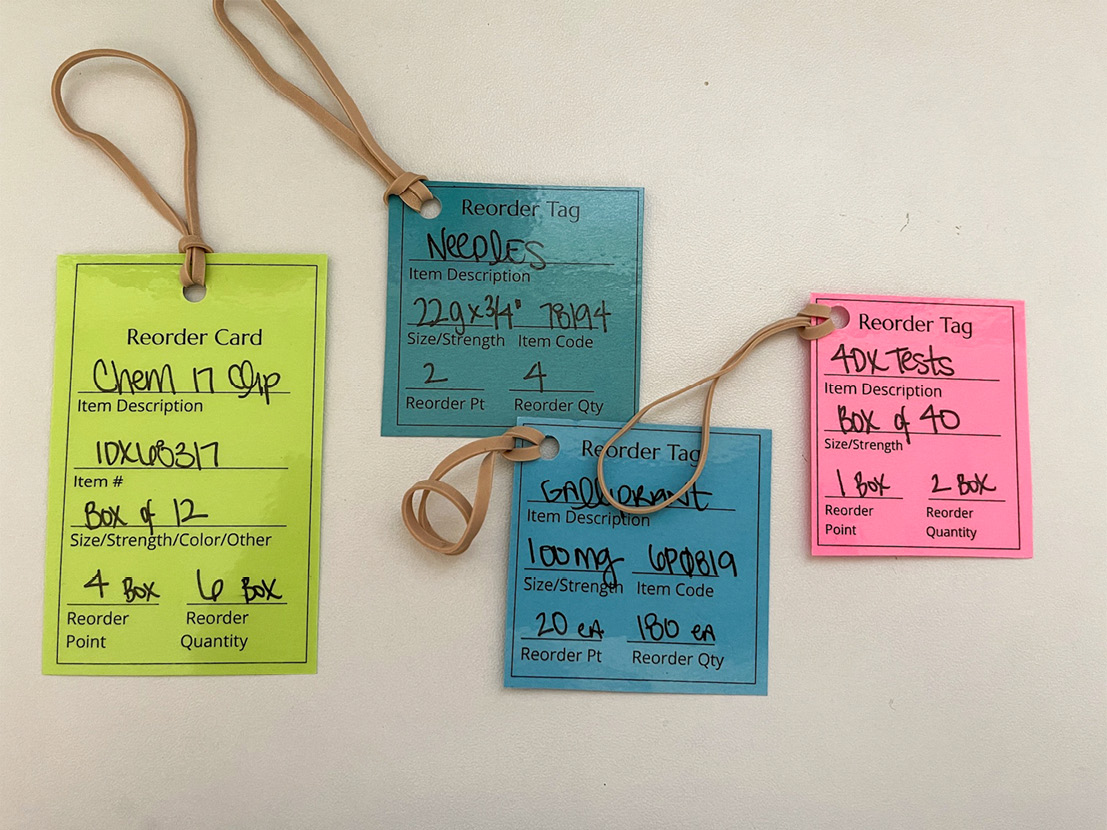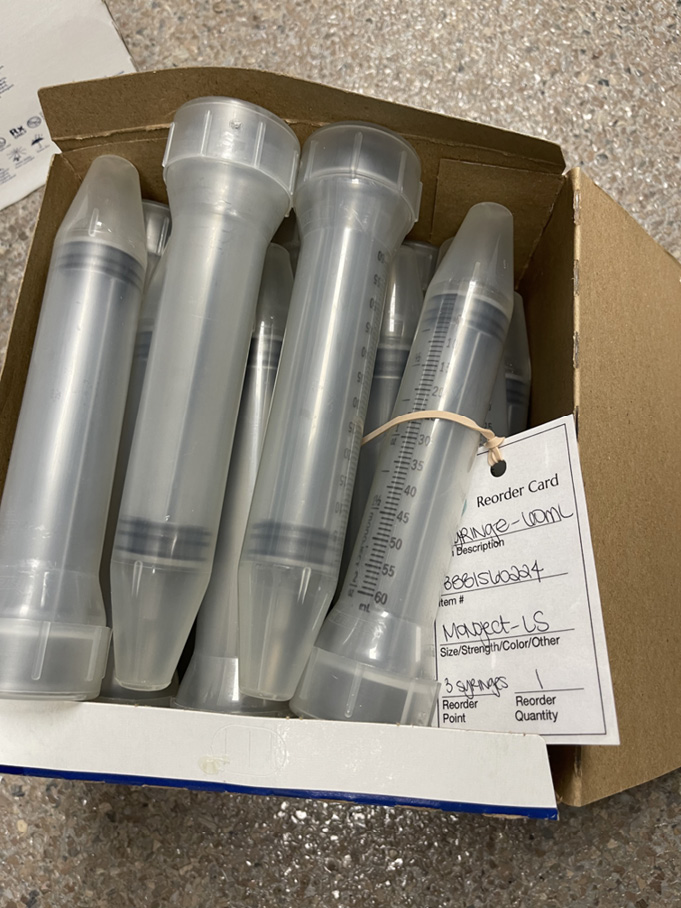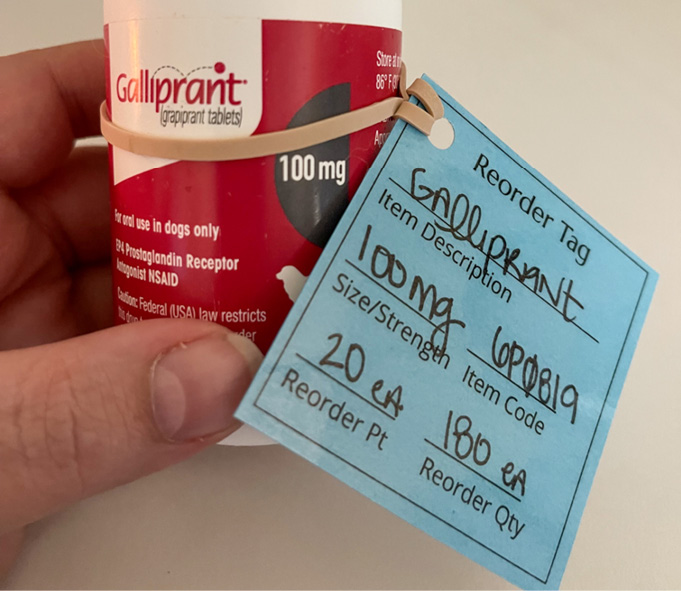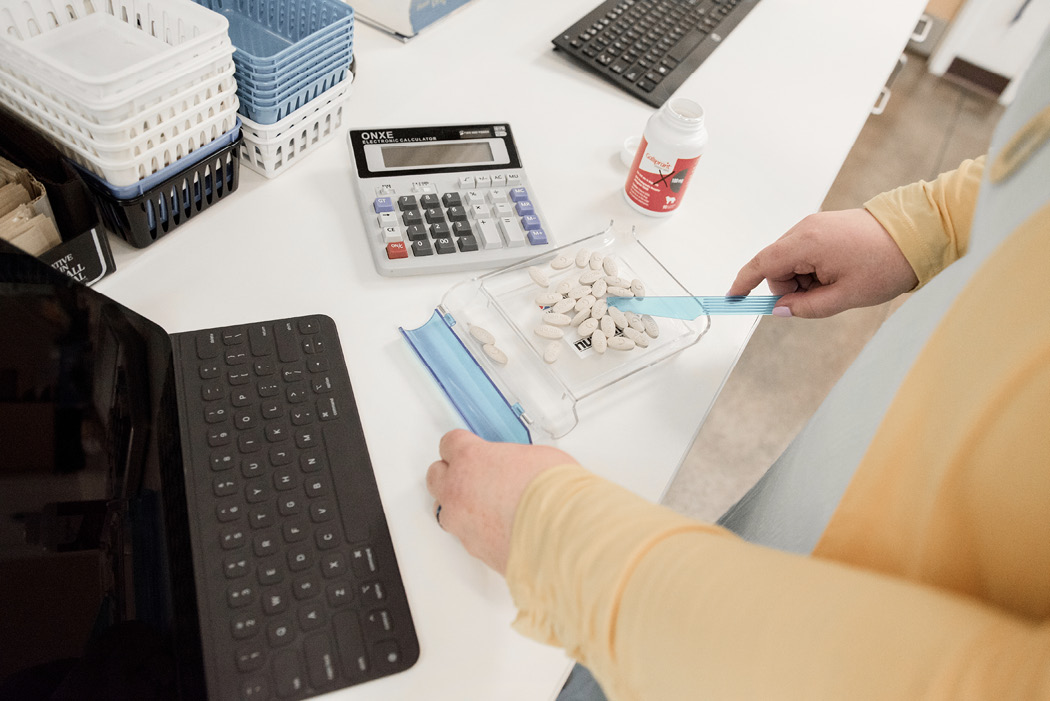Organize Inventory with Ease
5 Pro Tips for Making Managing Inventory Easier
by Nicole Clausen, CSSGB, CCFP

When I first started managing inventory, my only training was, “When you shake a bottle and it feels low, order it.” I remember standing in the pharmacy thinking, “But wait, what does that actually mean?” In the beginning, I would walk around the pharmacy shaking bottles, digging through drawers, trying to remember all the products and supplies the practice kept in stock. Sometimes, I would forget to order something; other times, I wouldn’t order nearly enough; and other times, I would order way too much.
As I created systems as an inventory manager and eventually became an inventory consultant and educator for veterinary professionals, I’ve learned some tried-and-true methods and strategies that you can implement in your practice to make managing inventory much easier. What I’ve experienced over the years is that inventory management doesn’t have to be complicated and doesn’t need to take up a ton of time.
When we are managing inventory, we want to navigate the balance between two main goals. We want to have what we need in stock for our patients, all while keeping the financial performance of our practice in mind. Whether you are a beginner or a seasoned pro at managing inventory, here are five of my favorite strategies to make inventory easier and help you get back to your patients faster.
#1: Know What Items to Order and When to Order Them
In my experience, I’ve found that many practices keep track of what to order by using the “want book.” When something is running low, a team member will write it down in the book or on a whiteboard. Then, whenever it’s time to order, they’ll use what’s written down and walk around trying to identify any other low items. That’s the method I used when I first became an inventory manager.
As a beginner, I ran out of a few essential items because no one told me we were low and I had forgotten to check them. After that experience, I thought there had to be a better way, and I was on a mission to find it. That’s when I learned about reorder points and creating reorder flags that didn’t rely on the “want book.”

Reorder points are a flag to know when an item is running low; it’s the “point” or low level where an item should be ordered./p>
Reorder points are a flag to know when an item is running low; it’s the “point” or low level where an item should be ordered. It’s “low” quantified. The corresponding reorder quantity is how much to order once that particular item is low. Reorder points changed the game for how I managed inventory!
Reorder points are a great way to forecast your demand. It’s a way of using the data of what you’ve used or sold over a particular period to predict what you’ll use in the future. As an example, let’s say that for the last two months, you’ve sold 4,000 capsules of gabapentin 100 mg. Knowing that information, you can predict that you’ll likely sell another 4,000 capsules in the next two months. Taking that information one step further, you can think about being “low” as having a two-week supply on the shelf, a commonly used reorder point. Rather than just shaking a bottle and guessing when it’s low, you’ll know precisely what “low” is.
A great way to get started with reorder points is with reorder tags. A reorder tag is a physical flag that’s attached to your reorder point. Then, when that reorder point is reached, a team member will take off the tag and stick it in a bin, and you know it’s time to order it. These physical tags work great for hospital supplies, consumables, bandaging supplies, janitorial supplies, and more. They are very versatile!
Let’s explore an example. You’ve determined that when you get down to three boxes of 1cc syringes, you want to order six additional boxes. You would rubber band (or tape) the reorder tag to the third to last box. When someone opens that box, they remove the tag and put it in the “to be ordered” bin. Then, when it’s order day, you grab all the tags from the bin, and you know what to order.
 Attach colorful reorder tags to inventory items and include details on when to reorder and how much to reorder.
Attach colorful reorder tags to inventory items and include details on when to reorder and how much to reorder.
The downside of using tags, though, is that your team might not put them in the bin. They might get put in the trash, on the shelf beside them, or ignored. That’s why I like to put bins throughout the practice, ensure the team knows exactly what to do with them, and develop fun ways to help your team get into the habit.
There are a few different ways of calculating reorder points and various types of reorder flags that you can use in your practice to help know when something is low without the “want book.”
If you’re already using reorder points in your practice, here are some considerations:
- When was the last time you calculated your order points? Have you had any changes in your practice that might impact what you’re selling?
- Are the order points you’re using now working for you? Are there any other types of flags you’d like to explore?
- Are there any products in particular that you’ve run out of or would like to review the reorder points for?

Reorder tags are a great way to remind staff to reorder products when they get below a certain threshold.
#2: Invite Your Team to Get Involved
Inventory is a team sport! Although there might just be one or a few people ultimately responsible for inventory, the whole team can and should be involved. At the very least, everyone in the practice should recognize its importance to your patients and practice. Remember, having inventory in stock and accessible means we can care for our patients! Depending on your practice, this could look like:
- Someone who loves craft projects might enjoy creating and maintaining reorder tags.
- Someone who loves organizing and watches The Home Edit on their day off might enjoy keeping the pharmacy, storage, and retail areas organized and tidy.
- A lead dental or surgery technician might be in charge of keeping the surgery suite or dental cart adequately stocked.
- Someone who loves spreadsheets, number crunching, and solving puzzles (with a dash of Type A personality) might enjoy being the inventory lead.
The benefit of cultivating a team culture that prioritizes inventory is that the patients win, whether the inventory team is responsible for it or the responsibility is shared throughout the practice. Also, having a team approach to inventory can bring added benefits. Different team members bring various skills and differing perspectives, there is shared accountability, and having a team approach can help catch errors more quickly and effectively.
#3: Leverage Your Practice Management System
Your practice management system or other inventory software can be an invaluable tool for your inventory. Depending on your software system, it can be a treasure trove of information and tools to make managing inventory easier. There are four main categories that I’ve found to be helpful:
Reporting
Depending on your practice management system, you can use different inventory reports to view sales reports and other financial information. For example, you can use sales reports to evaluate product markups and overall profit margins. You can also use reports to view the value of your inventory on hand to see if you’re overstocked, have excessive amounts of stock, or use them for accounting and tax purposes.
Sales Information
Even if you are not currently using the inventory module in your practice management system, you will likely still have sales information because of how practices invoice out clients. Using sales information can be helpful to see what products are selling, what your top items are, or what items might be on the shelf collecting dust. Using this information can help you make data-informed decisions for your inventory.
Inventory Tracking
When you use your practice management system to track your inventory, you’ll quickly see what you have on hand and what you are running low on. You can even use the difference between what’s on the shelf and what’s in the software to help catch missed charges, excessive waste, or theft. Remember our order points from tip #1? You can enter your reorder points into your software, and your software can flag when you are running low. Reorder points in your software and using reorder tags can be a winning combination to make managing inventory much easier!
Receiving
With many practice management software systems, you can receive or enter inventory after it’s been ordered and arrives in your practice. Using this function can help to easily update how much you’ve ordered (increasing your current quantity on hand) and update your prices as your costs increase. This workflow can help automate price increases so they don’t get missed and keep your inventory more accurate in your software.
Depending on your practice management system, it might have tools and functions to help manage inventory.
 #4: Organize Your Inventory
#4: Organize Your Inventory
Keeping your inventory organized can help you and your team find what they need, when they need it. Nothing is worse than having a critical case, digging through cabinets or drawers, and not finding what you need. Not only that, but creating a system for structure and organization in your pharmacy and practice can help reduce expired products, overordering, and products getting lost.
When organizing your inventory, I recommend that each item have a primary location (ideally with a label) and a defined secondary backstock or overstock location. This way, everyone on your team knows exactly where an item is located and can cut down on the mental labor of trying to remember where things are all the time.
You can also combine your shelf labels and reorder points to easily see your reorder points (and if something is running low). For example, you could have a shelf label for primary IV lines. The label could list the item name, code (for purchasing), the reorder point, and the reorder quantity. Then, as you’re looking through the pharmacy or central storage areas, you’ll be able to quickly identify where an item should be and whether it’s running low.
When organizing your inventory, I recommend that each item have a primary location (ideally with a label) and a defined secondary backstock or overstock location.
Organizing your inventory can be a great way to ensure everything can be found with ease and to know what you have on the shelf.
#5: Count Your Inventory
Cycle counting—counting small amounts of inventory frequently throughout the year—can make managing inventory much easier. You might be thinking, there is no way that I have enough time throughout the week to count inventory (and I don’t want to do this either!). I completely understand, but maybe I can help change your mind. Cycle counting is where you count small amounts of stock frequently, often weekly, throughout the year. With this process, typically, you count your high-value/often-sold items more regularly (like heartworm prevention or vaccines) than low-value/infrequently used items (like cotton balls or tongue depressors).
 Cycle counting—counting small amounts of inventory frequently throughout the year—can make managing inventory much easier.
Cycle counting—counting small amounts of inventory frequently throughout the year—can make managing inventory much easier.
Cycle counting is helpful for several reasons. First and foremost, it helps you to keep your inventory in your practice management system accurate throughout the year. This means that your reorder points will flag at the appropriate time, and you can catch missed charges, theft, or other problems with your inventory. Additionally, because you kept your inventory accurate throughout the year, you don’t have to do a massive end-of-year count that takes days!
For example, it’s much easier to find out why you’re missing 187 cephalexin capsules in one month than waiting until the end of the year when you realize you are missing 9,247!
Although cycle counts might not be the most fun task, they are very beneficial and help make managing inventory easier for you and your team.
Managing inventory doesn’t have to be a lonely and frustrating job. I know it can feel that way sometimes, but your role is valuable and vital to your practice. Whether you enjoy inventory or you’d rather be doing anything else, there are ways you can make managing inventory easier in your practice. I invite you to be curious about what might work for you, how you can implement these strategies, and how you can make a difference in your inventory. I’m cheering you on every step of the way!
 |
Nicole Clausen, CSSGB, CCFP, is the founder of Veterinary Care Logistics, a consulting and education firm specializing in inventory management for veterinary professionals. She is also the founder of the Veterinary Inventory Strategy Network, the host of the Inventory Nation Podcast, the creator of the Certified Veterinary Inventory Professional program (the first-ever certification for inventory managers), and the cofounder of Inventory Ally and is a regular speaker on inventory management. |
Photo credits: cosinart/iStock via Getty Images Plus, Photos courtesy of Nicole Clausen



